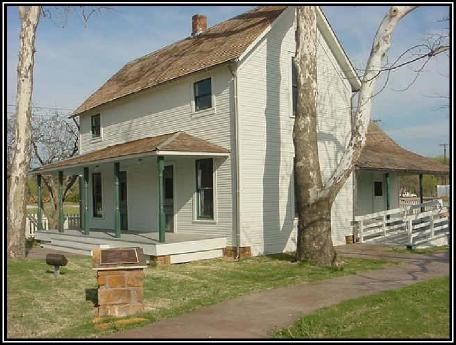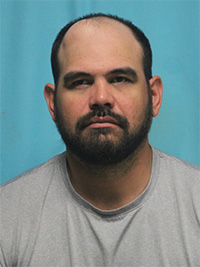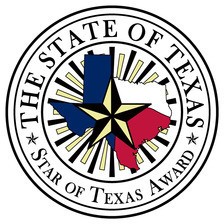The very spirited election over Proposition One saw approximately a split of 50/50 on the issue, with the No Votes prevailing. So does this ring the bell that the “Rural Feel” opinion no longer dominates the Colleyville community?
Every citizen survey in preparation for the City’s Master Plan for the last 20 years, has stated otherwise.
One survey read, “The citizens of Colleyville have always enjoyed the rural atmosphere that is still apparent today and the community offers a pleasant retreat from the noise and traffic found in most neighboring cities. Efforts to keep Colleyville’s rural character have largely been successful over the years as evidenced by the retention of much of the original county road system throughout the community. Also contributing to the rural atmosphere in Colleyville are the many new stately homes that have been constructed on large estate-type tracts along the major routes through the community.
To preserve the quality of life and to protect the unique rural setting in Colleyville, the community has participated in several city planning efforts over the past three decades. This particular planning program represents the fifth time the community has undertaken a formal effort to document the past and chart the city’s future physical development.”
Another Master Plan overview reported, “Urban Design During the development of this master plan update, numerous comments were made regarding the need to preserve the rural feel in Colleyville and the promotion of the “Colleyville image”. To accomplish this goal, it is recommended that future developments along major collector streets in Colleyville be required to provide an open-space buffer strip adjacent to the major street. Additionally, subdivision design would include lots which back up to the open space. Another design consideration for lots which front a major collector street is to require a generous front yard set-back of forty feet or more and to encourage decorative screening adjacent to the roadway, such as wrought iron fencing with masonry columns. This would help to encourage estate settings and promote an excellent gateway image for the community. Zoning of individual lots to the higher densities of the R20 or R30 district along major thoroughfares should be discouraged.”
However, the problem is that the City did not require the generous “set back” on many homes built in the past, much less homes built along Glade in the last 5 years. Therefore, the Rural feel along with the issue of Glade being a major “collector” do not mesh.
On the other hand Hall Johnson is an example of a major collector, yet still maintaining a rural feeling with trees and landscaping along the route, because it was planned as an East/West route, unlike Glade Road.
In comments shared with the Colleyville Courier, Nancy Coplen highlighted, “her desire to preserve the city’s rural atmosphere,” while Mike Taylor said his campaign, “focused to preserve quality of life.” Curiously both winning candidates were directly tied to the “progressive” VOTE NO on the proposition to protect Glade Road. So it will now be left up to citizens to monitor the actions of this council to determine if the “rural feel,” is still a prominent underlying theme in their perception of that quality of life along Glade Road.
Taylor, who prevailed by only 174 votes, apparently to placate the more than 2,500 residents voting for his opponent (who primarily favored Proposition One), made a seemingly cavalier statement that he would tell the Glade proposition backers to, “not lose any sleep over this.” It seems, once again, promoting Taylor’s well-known reputation of being on all sides of every issue.
Further, Taylor stated, “It’s been probably the nastiest race I’ve probably ever had to go through.” A most curious statement from a candidate that has been sued for defamation of his opponent Bobby Lindamood.
A Historical Look at the Development of Colleyville.
Pioneers moved into the Colleyville area during the late 1800’s, shortly after the end of the Civil War. As more settlers moved into the area, six small communities sprang up, generally centered around a church, school or lodge.
In 1888, the railroad was extended through the area, and for many years brought passenger service to a small depot located where today Bransford Road crosses the Cottonbelt Railroad.
Colleyville can trace its namesake to Dr. L. H. Colley and his wife, Martha, who settled in the community in 1885 and practiced medicine for many years in the Colleyville area.

The existence and growth of these small hamlets later led to the formation and ultimate incorporation of Colleyville on January 10, 1956. Colleyville was incorporated primarily to keep the area from being annexed by one or more of the neighboring communities. The physical remains of the six original small developments have all but disappeared, except for a few small homes that are still intact, such as the Webb House located at the northwest corner of the intersection of Shelton Drive and Bransford Road. This structure is owned by the City of Colleyville, and restored in 2002.
As stated in a previous Master Plan Review: “The citizens of Colleyville have always enjoyed the rural atmosphere that is still apparent today and the community offers a pleasant retreat from the noise and traffic found in most neighboring cities. Efforts to keep Colleyville’s rural character have largely been successful over the years as evidenced by the retention of much of the original county road system throughout the community. Also contributing to the rural atmosphere in Colleyville are the many new stately homes that have been constructed on large estate-type tracts along the major routes through the community.
To preserve the quality of life and to protect the unique rural setting in Colleyville, the community has participated in several city planning efforts over the past three decades. This particular planning program represents the fifth time the community has undertaken a formal effort to document the past and chart the city’s future physical development.”
For the residents living along Glade Road, these statements may seem contradictory with the outcome of the election on May 9, 2015. However, the proponents that were identified as those who were in favor of doing nothing on Glade Road; but actually committed to improvements, without the 10 ft. trails taking major property from residents, will have to stay engaged with this issue and their city council if they still believe the prominent desire of Colleyville citizens is to preserve the “rural feel” of the city.

















